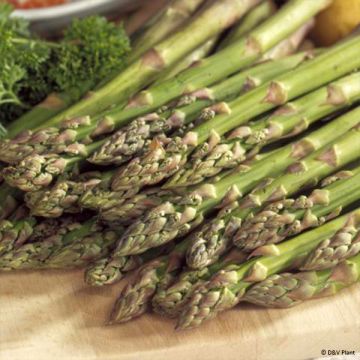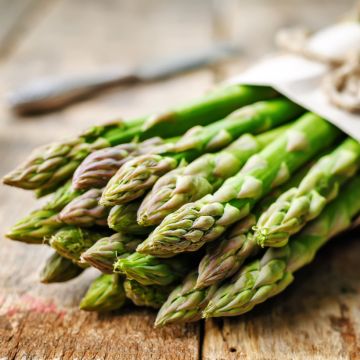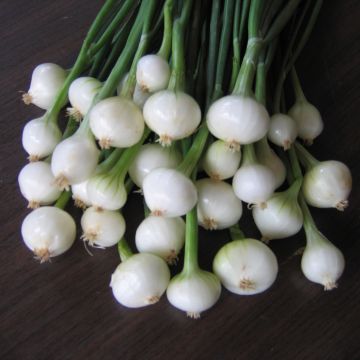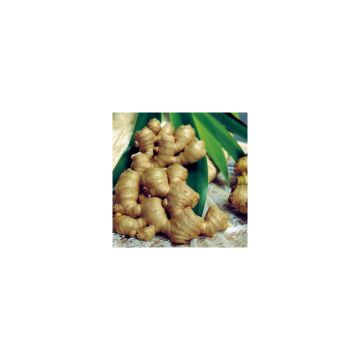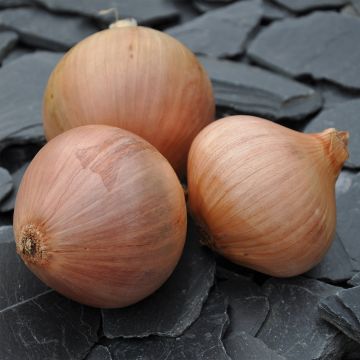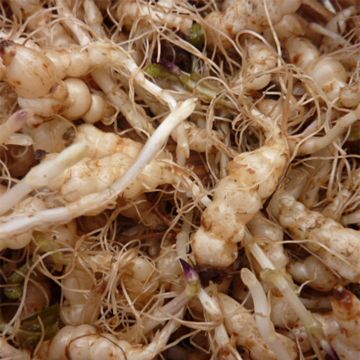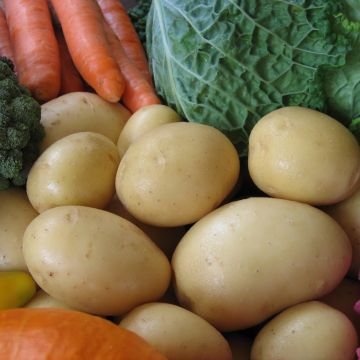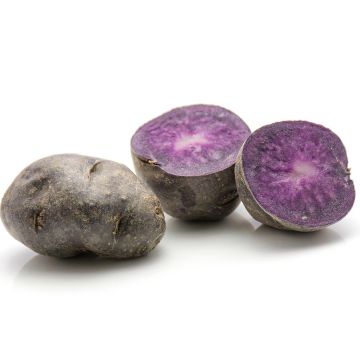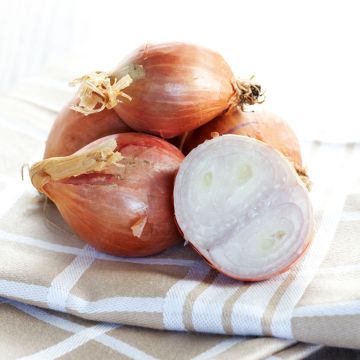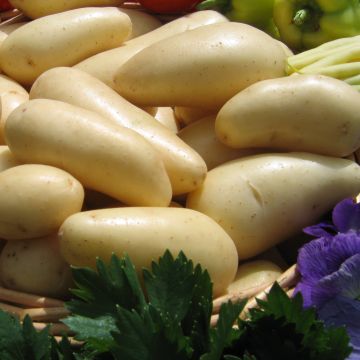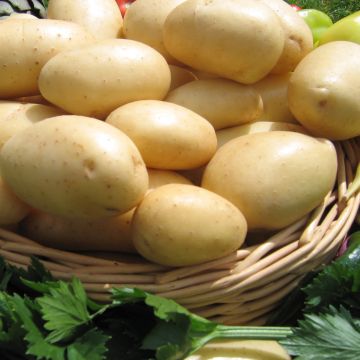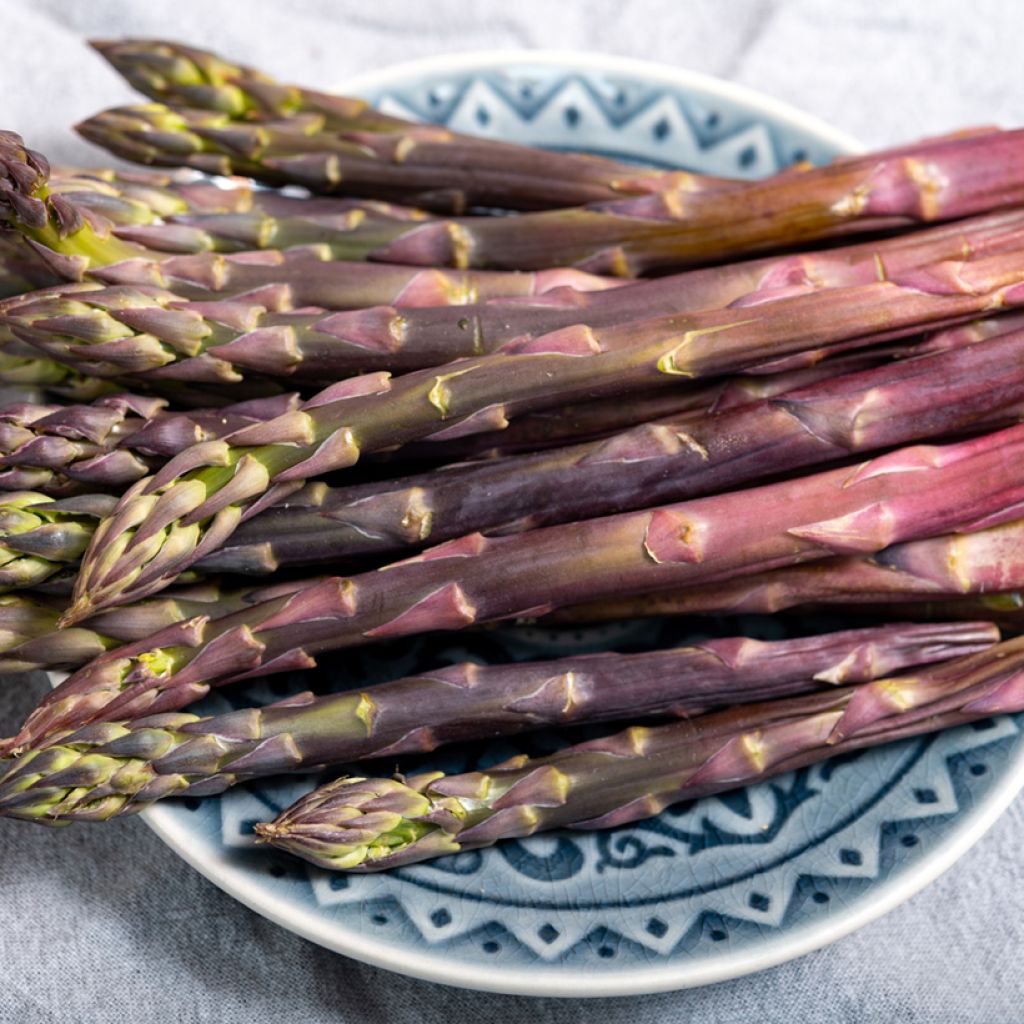

Rosalie Asparagus crowns - Asparagus officinalis
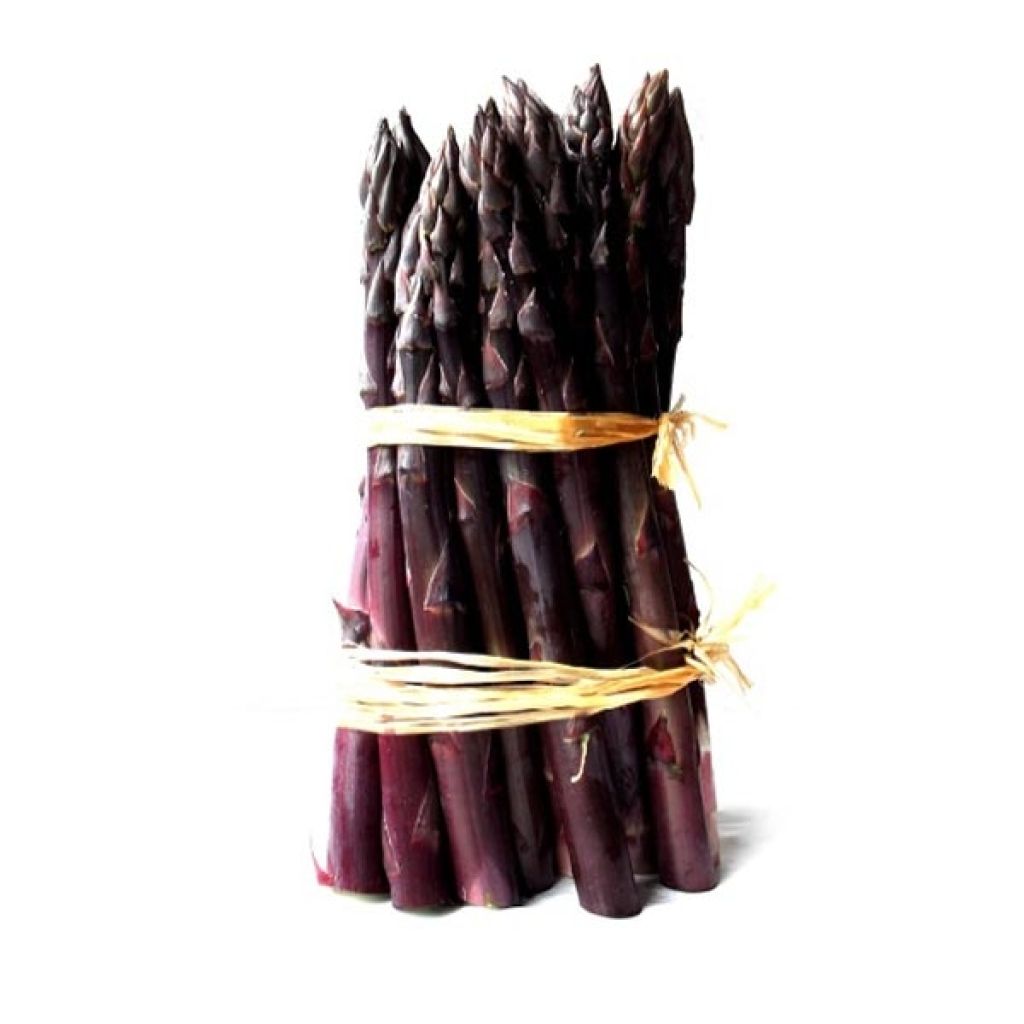

Rosalie Asparagus crowns - Asparagus officinalis
Rosalie Asparagus crowns - Asparagus officinalis
Asparagus officinalis Rosalie F1
Garden asparagus, Asparagus, Sparrow grass
I am very pleased.
Rita P., 14/04/2020
This plant carries a 6 months recovery warranty
More information
We guarantee the quality of our plants for a full growing cycle, and will replace at our expense any plant that fails to recover under normal climatic and planting conditions.
From €5.90 for pickup delivery and €6.90 for home delivery
Express home delivery from €8.90.
Delivery to Corse prohibited: UE law prohibits the import of this plant from mainland France to Corse as part of the fight against Xylella fastidiosa. Please accept our sincere apologies.
More information

Description
The 'Rosalie F1' Asparagus forms a beautiful, tall and airy clump of vegetation and produces young shoots or turions of a purple-red colour, with a large diameter, measuring 22 to 24 mm (1in) in diameter, with a well-closed tip, tender, and of excellent taste quality. Their flesh has a slightly sweet and fruity flavour with a hint of bitterness. This hybrid variety tolerates acidic soils well and is relatively resistant to rust and Stemphylium. It is cultivated more like green asparagus in full light, but it will take on a lovely pink colour if grown like white asparagus, protected from light. The crowns are planted in the ground in March-April after preparing the soil well the previous autumn. Wait until the 3rd year to start harvesting, then harvest every year from April to June for 10 to 15 years. Once cooked, asparagus can be eaten cold as an appetiser or hot, according to your preferences: in soups, gratins, sauces, etc.
The colour of the asparagus (Asparagus officinalis) is due to its variety and the amount of light it receives. White asparagus grows entirely underground and is harvested as soon as the tip emerges. Violet asparagus is harvested a little later when the tip emerges from the ground. They have a purple head and a more or less white stem. Green asparagus, on the other hand, grows in the light and turns green thanks to photosynthesis. Purple asparagus is grown like green asparagus. Its colour will change from purple to green when cooked. Each variety can produce white or green asparagus, depending on the cultivation method, even if it is often recommended for a particular colour.
Asparagus is rich in fibre, vitamin B9, and minerals and is naturally diuretic (it gives urine a distinctive odour). It can be cooked and eaten cold (as an appetiser, with mayonnaise or vinaigrette) or hot (in soups, gratins, sauces, omelettes, stir-fries...). Green asparagus has a slightly more robust flavour and must not be peeled.
Asparagus is planted in the form of crowns in the ground. A crown is a set of underground roots with dormant buds. It will give rise to several young asparagus shoots called turions. Choose carefully where to plant the asparagus because the production lasts 10 to 15 years. In summer, after harvesting, tall, feathery foliage will appear. This foliage can be used in flower arrangements, for example.
Harvesting: Asparagus is harvested in May and June (from April for early varieties) when they are at least 1cm (0in) in diameter. To harvest white and violet asparagus, use an asparagus knife. Insert it into the ground and make a levering motion to cut the asparagus. Green and purple asparagus can be cut by hand. In the first two years, do not harvest anything. In the 3rd year, harvest every other shoot. From the 4th year onwards, only two-thirds of the shoots are harvested to allow the plant to continue growing.
Storage: To fully enjoy their flavour, consume asparagus quickly after harvest. Asparagus can be stored in the refrigerator for a few days and wrapped in a damp cloth. For long-term storage, you can freeze or preserve them.
Gardener's tip: From the 3rd year onwards, you can plant other crops, such as green manure, between the rows of asparagus. They will provide nitrogen to the soil and limit weed growth. However, avoid clover and alfalfa, as they are susceptible to purple rhizoctone, like asparagus. Add a little green manure in autumn.
Age: These asparagus crowns are already two years old and can start producing in the 3rd year.
Report an error about the product description
Harvest
Plant habit
Foliage
Other Asparagus plants
Planting and care
Planting - 1st year:
Asparagus is planted in March and April (or as early as February in mild climates). They require sandy soil with good drainage. Plant the crowns in a sunny location, preferably where no root vegetables have been grown in previous years.
In autumn, dig a trench 40 cm (16in) wide and 25 cm (10in) deep for white or purple asparagus (15 cm (6in) for green and purple asparagus that do not require mounding). Keep the topsoil on one side and the subsoil on the other side. Space the trenches 1.50m (5ft) apart. Add well-rotted compost and mix it with the soil. If the soil is clayey, add sand to the bottom of the trench.
In the following spring, inside the trench, form mounds 10 cm (4in) high (one mound every 60 cm (24in)). Install a 1m (3ft) tall stake at the base of each mound to mark the location of the crowns and to secure the stems in case of wind.
Place the crown on the mound, with the tip facing upwards, and spread out the roots to form a star shape. Completely cover the crowns with the subsoil, about 5 to 10 cm (2 to 4in) deep. Firm the sides. Water thoroughly. Do not cultivate anything between the rows for the first two years, except for garlic and onions. Weed as needed. Do not harvest.
2nd year: Fill the trench with topsoil. Wait another year before starting the harvest.
From the 3rd year onwards:
In spring, apply a natural fertiliser rich in phosphorus and potassium. Incorporate it shallowly. Mound the base of the plants by 30 cm (12in) (except for green and purple asparagus).
The harvest begins in the 3rd year.
In autumn: Cut the stems 10cm (4in) above the ground with secateurs. Burn them to prevent the spread of asparagus fly larvae, among other pests. Lightly cultivate the soil surface to break up the top. Flatten the mounds. Apply well-rotted compost and incorporate it into the surface.
Cultivation
Care
Intended location
-
, onOrder confirmed
Reply from on Promesse de fleurs
Bulbs, crowns, and tubers
Haven't found what you were looking for?
Hardiness is the lowest winter temperature a plant can endure without suffering serious damage or even dying. However, hardiness is affected by location (a sheltered area, such as a patio), protection (winter cover) and soil type (hardiness is improved by well-drained soil).

Photo Sharing Terms & Conditions
In order to encourage gardeners to interact and share their experiences, Promesse de fleurs offers various media enabling content to be uploaded onto its Site - in particular via the ‘Photo sharing’ module.
The User agrees to refrain from:
- Posting any content that is illegal, prejudicial, insulting, racist, inciteful to hatred, revisionist, contrary to public decency, that infringes on privacy or on the privacy rights of third parties, in particular the publicity rights of persons and goods, intellectual property rights, or the right to privacy.
- Submitting content on behalf of a third party;
- Impersonate the identity of a third party and/or publish any personal information about a third party;
In general, the User undertakes to refrain from any unethical behaviour.
All Content (in particular text, comments, files, images, photos, videos, creative works, etc.), which may be subject to property or intellectual property rights, image or other private rights, shall remain the property of the User, subject to the limited rights granted by the terms of the licence granted by Promesse de fleurs as stated below. Users are at liberty to publish or not to publish such Content on the Site, notably via the ‘Photo Sharing’ facility, and accept that this Content shall be made public and freely accessible, notably on the Internet.
Users further acknowledge, undertake to have ,and guarantee that they hold all necessary rights and permissions to publish such material on the Site, in particular with regard to the legislation in force pertaining to any privacy, property, intellectual property, image, or contractual rights, or rights of any other nature. By publishing such Content on the Site, Users acknowledge accepting full liability as publishers of the Content within the meaning of the law, and grant Promesse de fleurs, free of charge, an inclusive, worldwide licence for the said Content for the entire duration of its publication, including all reproduction, representation, up/downloading, displaying, performing, transmission, and storage rights.
Users also grant permission for their name to be linked to the Content and accept that this link may not always be made available.
By engaging in posting material, Users consent to their Content becoming automatically accessible on the Internet, in particular on other sites and/or blogs and/or web pages of the Promesse de fleurs site, including in particular social pages and the Promesse de fleurs catalogue.
Users may secure the removal of entrusted content free of charge by issuing a simple request via our contact form.
The flowering period indicated on our website applies to countries and regions located in USDA zone 8 (France, the United Kingdom, Ireland, the Netherlands, etc.)
It will vary according to where you live:
- In zones 9 to 10 (Italy, Spain, Greece, etc.), flowering will occur about 2 to 4 weeks earlier.
- In zones 6 to 7 (Germany, Poland, Slovenia, and lower mountainous regions), flowering will be delayed by 2 to 3 weeks.
- In zone 5 (Central Europe, Scandinavia), blooming will be delayed by 3 to 5 weeks.
In temperate climates, pruning of spring-flowering shrubs (forsythia, spireas, etc.) should be done just after flowering.
Pruning of summer-flowering shrubs (Indian Lilac, Perovskia, etc.) can be done in winter or spring.
In cold regions as well as with frost-sensitive plants, avoid pruning too early when severe frosts may still occur.
The planting period indicated on our website applies to countries and regions located in USDA zone 8 (France, United Kingdom, Ireland, Netherlands).
It will vary according to where you live:
- In Mediterranean zones (Marseille, Madrid, Milan, etc.), autumn and winter are the best planting periods.
- In continental zones (Strasbourg, Munich, Vienna, etc.), delay planting by 2 to 3 weeks in spring and bring it forward by 2 to 4 weeks in autumn.
- In mountainous regions (the Alps, Pyrenees, Carpathians, etc.), it is best to plant in late spring (May-June) or late summer (August-September).
The harvesting period indicated on our website applies to countries and regions in USDA zone 8 (France, England, Ireland, the Netherlands).
In colder areas (Scandinavia, Poland, Austria...) fruit and vegetable harvests are likely to be delayed by 3-4 weeks.
In warmer areas (Italy, Spain, Greece, etc.), harvesting will probably take place earlier, depending on weather conditions.
The sowing periods indicated on our website apply to countries and regions within USDA Zone 8 (France, UK, Ireland, Netherlands).
In colder areas (Scandinavia, Poland, Austria...), delay any outdoor sowing by 3-4 weeks, or sow under glass.
In warmer climes (Italy, Spain, Greece, etc.), bring outdoor sowing forward by a few weeks.

































